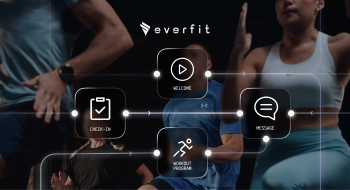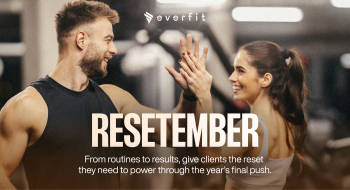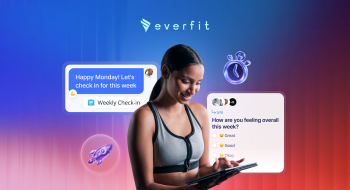Having a personal training platform is no longer just a nice-to-have. It helps you stay organized, deliver workouts, track progress, and keep clients accountable in one streamlined place.
When choosing a platform, you have two options: free or paid.
Free personal training apps are budget-friendly and offer just enough one-size-fits-all features to cover the basics. Paid platforms, on the other hand, come with advanced tools for personalized coaching and business management.
So, how do you know which one is right for you? Let’s compare them.
Pros and cons of a free personal training platform.
A free platform is often the first choice for new or budget-conscious coaches. These tools typically cover the essentials: basic workout building, client messaging, and standard progress tracking. They’re great for getting started without a financial commitment, especially for small teams and solo coaches testing the waters.
However, these platforms come with trade-offs. Most free plans limit the number of clients you can onboard and offer only surface-level features.
Top free fitness coaching apps
- Free spreadsheets (Excel, Google Sheets, or Notion).
- Fitpros.
- QuickCoach (recently shut down).
- Free plan from paid tools (usually limited to 5 clients).
Most of the time, coaches have to rely on additional tools to make up for the missing functions in free personal training platforms. If you’re juggling multiple tools, you’ll quickly feel the pinch.

Pros
- Zero upfront cost.
- Great for beginners or testing a workflow.
- Low risk for a side hustle or part-time coaching.
Cons
- Either limited in clients or limited in features.
- Free platforms rarely develop new features, and the ones they do have can usually become clunky.
- Free tools often lack automation, requiring manual setup and additional administrative work.
- Some free platforms contain disruptive ads.
- Little to no integration with other tools.
- Harder to scale as your business grows.
- Limited or no customer support.
Paid personal training platform as an alternative. Is it worth the price?
Many online personal trainers, hybrid coaches, and gym owners eventually make the switch to a paid personal training platform. Not just for the extra features, but for the time and revenue it helps unlock.
Paid platforms go far beyond the basics. They offer custom branding, habit tracking, client check-ins, automated workflows, integrated payments, and in-depth analytics, all designed to streamline your operations and enhance the client experience.

How much does a paid personal training platform cost?
With plans typically ranging from $30 to $80 per month, these tools can save you hours every week while helping you retain more clients. Note that even with as few as 10 clients, this averages out to be $3-8 per client per month, which is very minimal if you’re charging a client $100 to $500 per month. The ROI of a paid coaching app is definitely higher!
Most paid platforms offer both monthly and annual subscription options with tiered pricing. They also have free trials, so you can try it, test it before paying what’s best for you.
Top paid personal training platform
- Everfit: Powered by automation and AI, Everfit is an all-in-one platform for workout building, habit tracking, nutrition coaching, client check-ins, and selling packages. It also offers a free plan for up to 5 clients. Explore more about Everfit.
- Trainerize: Anything you need to manage your coaching business.
- TrueCoach: Best known for its program-building capabilities, TrueCoach is a popular choice among strength and conditioning coaches.
Pros
- Highly customizable for any clients and coaching models (1 to 1, 1 to many, in-person coaching, hybrid, or online training), driving higher lifetime value and client retention.
- Paid platforms often offer a fully branded client experience with an extra $3 to $8. This can be another USP for your service: “My coaching is delivered by a professional app, not scattered or easily forgotten messages and phone notes.”
- They have a much more professional support for client experience than the free app.
- Scalable for teams and growing businesses.
- Automation tools that run your business in the background.
- Ad-free experience.
- Diverse integration options and highly secure.
Cons
- Monthly subscription cost.
- Learning curve on setup.
- May require a break-even calculator or plan to assess ROI. Costs can add up as you scale or add premium features.
Free vs Paid: Which One Is Best for You?
Is the paid personal training platform worth it? Definitely yes, with all the extra features and benefits it brings. But does this mean a free personal training platform is a no-go? Not really.

When comparing free vs paid fitness coaching platforms, it ultimately comes down to scale, goals, and how much time you’re willing to spend managing clients manually.
- Free platforms give you just enough to get started.
- Paid platforms are built to streamline your business and save time.
You can test paid platforms using their free trials (usually 7 days to 30 days), then switch to a paid plan seamlessly without data migration.
If you want to move from a free to a paid platform (which happens when you’re scaling), migrating all your data and clients can be very tedious. You can easily mess up during the switch, while your clients get a poor experience.
| Feature | Free platform | Paid platform |
|---|---|---|
| Workout builder | Pre-built templates with a limited library that only covers common exercises. | Fully customizable, even supports periodization, 1RM, superset, drop-set, AMRAP, RIR and RPE. An extensive library with strength to mobility exercises. |
| Client management | Restricted to a small number of clients. | Pay per client added. Support group coaching. |
| Progress tracking | Basic metrics: body composition, calories, and weight lifted. | Advanced analytics to track performance changes week over week. Platforms like Everfit also support habit tracking (e.g., sleep, heart rate, steps). |
| Business management | No built-in features to support selling packages, billing, and onboarding clients. | Automates administrative tasks, including billing, onboarding, and program delivery. Includes integrated payments, package sales, discount codes, and promotions. |
| Client engagement | Basic client app for checking and logging workouts. Often with ads. | Seamless, ad-free experience with a premium look that enhances professionalism. Built-in check-in forms, workout calendars, meal logging, messaging, and community challenges. |
| Meal planning | Don’t have. | Support nutrition coaching with recipe library, meal planner, food journal for clients, macros settings, and many more. |
| Custom branding | Don’t have | Can change app color, app logo, and add your own video to make the client experience more branded. Everfit also offers while-label options that allow clients to download the app with your logo directly from the store. |
Use a free personal training platform if
- You’re just starting out with fewer than 5 clients.
- You want to test your workflow before committing financially.
- Budget is your biggest constraint.
- You only need a simple tool to store client progress and programs, no fancy customization required.
Use a paid personal training platform if
- You coach more than 5 clients.
- You need automation to assist with administrative and management tasks.
- You want to deliver a professional, branded client experience.
- You run a hybrid or remote business and need to scale.
- You want to maintain consistent communication and engagement with clients, even outside the gym.
- You’ve outgrown the limitations of free software.
Also read:
- How to Scale and Get More Personal Training Clients.
- 10+ Strategies (Psychology & Pricing) to Retain Clients.
- Turning Social Media Likes into Paying Clients: Learn how.
How to migrate clients between free and paid personal training apps.
If you’re considering switching to a paid option, we’ve got you covered! It’s undoubtedly a strategic move, but only if done correctly. Whether you’re switching tools entirely or upgrading within the same platform, planning your migration carefully will help avoid confusion, client drop-off, or time-consuming rework.
Here are key tips for a seamless transition:
1. Audit your current setup
Review how many clients you’re managing, what features you’re using (e.g., check-ins, calendars, payments), and what’s missing from your current system. This helps you know what to prioritize in your new setup.
2. Choose a paid platform with import tools or onboarding support
Look for software that offers easy client imports, copyable programs, or concierge onboarding. For example, Everfit’s AI workout builder can import workouts and programs via text or PDF into a fully logged library in seconds, so you don’t have to drag-and-drop from scratch.
3. Notify clients ahead of time
Let clients know what’s changing, why it’s an upgrade, and how it’ll benefit them, such as new features, improved tracking, or smoother communication.
4. Set up your workflows before inviting clients
Build your programs, set up automations, and test your tools first. That way, when clients log in, everything feels polished and ready.
5. Use tags or groups to segment clients
If you’re working with different types of clients (online, in-person, or group), organize them with tags or folders from the start to stay efficient.
6. Offer support during the switch
Provide your clients with a short walkthrough video, an FAQ sheet, or even a live call to help them become comfortable with the new app.
A well-managed migration shows your clients that you’re taking the next step and makes your paid platform feel like a genuine upgrade, not a hassle.
Wrapping Up
Choosing between a free and a paid personal training platform isn’t just about cost; it’s about how far you want your coaching business to grow. As a free platform is perfect for getting started, a paid tool should serve as an accelerator once your client list grows. It turns your coaching into a professional system and saves hours every week. Investing in the right paid tool is really investing in your time, your brand, and your clients’ experience.
So, if you’ve been wondering when to upgrade, the answer is simple: Stay free while you’re learning. Go paid when you’re ready to grow. Most paid fitness coaching platforms offer free plans to get started with.
FAQ
- Which are the best online personal training platforms?
Everfit is currently the top platform trusted by over 200,000 fitness coaches. It offers free and paid plans, allowing anyone to start, from program building and meal planning to habit coaching and business management.
- What are the best free personal training platforms?
Everfit is free for up to 5 clients and includes extensive features such as nutrition and habit coaching. Fitpros is another option that offers free access for unlimited clients but is limited to program building and progress tracking.
- How much should I invest in a paid personal training platform?
Depending on your needs, the cost can range from $30 to $80 per month. The higher you go, the more you can do, such as selling packages, custom branding, automating program delivery, creating fitness challenges, besides workout builder and meal planning.















